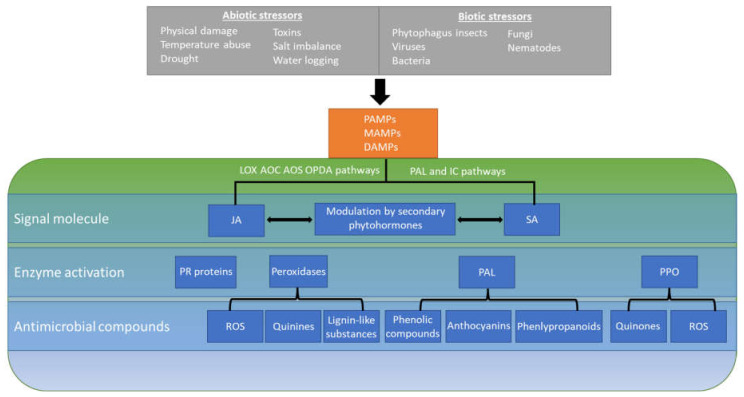Figure 1.
Plant basal defenses and production of antimicrobial compounds. Recognition of pathogen-associated molecular patterns, microbe-associated molecular patterns, and damage-associated molecular patterns (PAMPS, MAMPS, and DAMPS) trigger activation of the jasmonic acid (JA)- and salicylic acid (SA)-mediated defense responses. Through various interconnected pathways, JA and SA, along with secondary phytohormones, lead to an accumulation of peroxidases, phenylalanine ammonia lyase (PAL), polyphenol oxidase (PPO), and the expression of pathogenesis-related (PR) genes, some of which encode defensins. Together, peroxidases, PAL, and PPO are responsible for the generation of compounds important for defending against abiotic and biotic stressors. These pathways and resulting bioactive molecules may be harnessed to control the contamination of plants by enteric pathogens.

